Статьи журнала - Arctic and North
Все статьи: 955
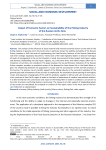
Impact of Economic Factors on Sustainability of the Fishing Industry of the Russian Arctic Zone
Статья научная
The analysis of the influence of actual external and internal economic factors on the work of the fishing industry in general and in the Arctic zone in particular shows the stability and ability of the Russian fishery complex to fulfil the tasks of implementing the Food Security Doctrine of the Russian Federation and other strategic regulatory documents. Timely work of the state legislative bodies in decision-making at all levels of management in the current situation is noted. Key economic factors (export and import, supply and demand, shipbuilding and ship repair, logistics, etc.) that have direct and indirect impact after the introduction of sanctions are considered. The paper analyses the key performance indicators of the Russian fishery complex, provides an analytical review of the demand for fresh-frozen fish in the North-West region, the relationship between the population’s income and the consumption of fish and fish products in the country. The primary role of scientific support of the fishing industry in the successful realization of the general goals and achievement of the set tasks is emphasized. An assumption about opening of new logistic routes and expansion of geography of fish and fish products supplies to African and Latin American countries, countries of Asia-Pacific region is made on the basis of assessment of modern international relations. It is determined that the construction and repair of the fishing fleet in modern conditions is of concern to the state structures and fishing business community. The measures of state support of shipbuilding plants of the country are considered, the proposal on creation of ship repair cluster in the Arctic zone of the Russian Federation is substantiated.
Бесплатно
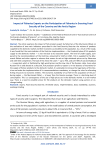
Статья научная
The article examines the impact of fish products export by fishermen of the Murmansk Oblast on the realization of two main indicators prescribed in the Food Security Doctrine: the volume of products supplied to the domestic market and their economic accessibility to the population. As a result of the study, it was found that the main indicator of the Doctrine implementation — the threshold value of fish products supply to the domestic market — is not met due to its excessive export. The level of under-supply, compared to the recommendations of the Doctrine, amounted to 53.4% in 2021. Fish is supplied to the Murmansk Oblast and other regions in volumes that ensure its sale at high wholesale prices set by fishermen and with little competition. The bulk of the Arctic fish catch — up to 75%, and over 90% of cod and haddock — is exported, which is facilitated by high world prices and the low rate of the Russian ruble. Even when Russian fish is sold abroad at a discount, fish producers prefer to export it. In the absence of incentives for the supply of fishery products to the domestic market, it is advisable to increase the legal status of the Doctrine and make the implementation of its recommendations mandatory, or change the rules for allocating fishing resources to economic entities. The economic availability of cut fish for the population of the producing region — the Murmansk Oblast — is lower than the Russian average. There is a declining level of consumption. This is a consequence of the use of high prices set in the domestic market in a non-market way. There is a need to establish prices for fish products on the domestic market using auctions or exchange trading.
Бесплатно

Implications of the use of liquefied natural gas for marine transportation in the Arctic
Статья научная
The transition from the use of bunker fuel to the use of the liquefied natural gas (LNG) for the Arctic marine transportation has various consequences. The author is interested to present the issue in the political, economic, environmental, marine legal perspectives. Implementing the regime efficiency and niche selection approach as well as the Environmental Kuznets Curve, the paper demonstrates potential benign interdependence of the Arctic countries after they have transferred their vessels to LNG. In such circumstances, Norway, Canada and the US are shown as the most benefiting nations. The second part of the article is devoted to the significant environmental improvement after the transition with a particular attention to the dramatic decrease of black carbon (soot) which leads to increase of albedo. Finally, the paper examines the existing legal provisions regulating the transition to LNG and modulates a further development scenario based on the theory of the lifecycle of a norm.
Бесплатно
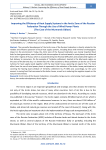
Статья научная
The successful development of the Arctic zone of the Russian Federation is directly related to the reliable and efficient operation of local heat supply systems, including those with minimal anthropogenic impact on the environment. Today, the Arctic zone of the Russian Federation uses mainly imported fossil fuels for heat generation, most of which (with the exception of coal and wood in some places) are delivered from other regions of Russia, which is associated with great financial difficulties and complicated logistics of fuel delivery to consumers. On the example of Teriberka settlement, located in the Murmansk region on the coast of the Barents Sea, it is shown that one of the solutions to these problems can be the use of wind turbines for heat supply needs together with the local boiler house, operating on organic fuel. The main effect from the use of wind power plants is expressed in the reduction of the boiler house participation in covering the heating load schedule of Teriberka settlement by 75-80% and, accordingly, by the same amount in saving fossil fuel consumed at the boiler house, as well as in reducing the negative impact on the natural environment.
Бесплатно
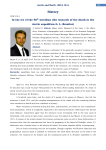
Статья научная
In the article gives a refutation of the generally accepted versions of the fate of the thirteen members of the expedition Brusilov, remaining on board the schooner “St. Anna” after the departure of the navigator Albanov V. A., in April 1914. For the first time, gathered together on the basis of available historical and geographical sources of currents, winds and drifting ice in the Arctic in a particular area, showing the most probable direction of the drift of the schooner, the reasons for its demise and the subsequent path of G. Brusilov expedition to the eastern coast of Svalbard.
Бесплатно
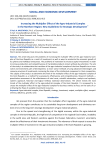
Статья научная
The article discusses the problems of increasing the multiplier effect of the agro-industrial complex of the Komi Republic as a result of investment, as well as ways to accelerate the economic growth of its spheres and individual enterprises. The problems of motivation to increase capital investments in order to increase production and competitiveness of marketable products remain without due attention. The aim of the study is to substantiate the transition of the agro-industrial complex of the Komi Republic to an innovative and investment path of development, to more active methods of using advanced technologies and resource provision of investments, increasing the share of the intellectual component in their composition. The subject of the study is to determine the level of the multiplier effect of the agro-industrial complex of the Komi Republic as a method for assessing its effectiveness and competitiveness. Research methods — quantitative assessment of the effectiveness of total costs, scientific abstraction, analysis and synthesis, systems approach, historical and logical method, statistical observations. The article reveals the main trends of the multiplier effect in the agro-industrial complex of the Komi Republic. It is proposed to increase the multiplier effect of the agro-industrial complex for business entities to focus on the tasks of coordinating the flows of available investment resources.
Бесплатно

Статья научная
In 1914, the Canadian Arctic Expedition (CAE) attempted to advance Canadian sove-reignty in the Arctic as part of the colonial project, itself propelled by imperialist impulses rooted in complex imperialist ideology. The CAE came to an abrupt end with the sinking of one of its ships, the Karluk, with survivors setting up camp on Wrangel Island in the Arctic Ocean. With the Alaskan Inupiaq Claude Katаktovick1, Robert Abram Bartlett, captain of the Karluk, trekked hundreds of miles over rough ice to and then through Chukchi territory in Siberia. From there, Bartlett was able to mount a rescue of the remaining Karluk survivors. Bartlett’s accounts of his weeks with Kataktovick and the Chukchi serve as a case study of explorer-Indigenous relations in the era of exploration. The Indigenous people of the Arctic were subject to explorers in a hierarchical relationship built around supporting exploration. Despite their often central and sometimes life-saving roles, as actors, Indigenous people are generally invisible in polar narratives. Yet the story of the Karluk demonstrates that, even within the constraints of this context, Indigenous people could emerge as central agents and explorers could move towards more egalitarian relations with Indigenous people.
Бесплатно
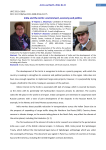
India and the Arctic: environment, economy and politics
Статья научная
The article analyzes the main trends in the development of India and the development of the Arctic: the participation in the study of global warming and the state of the Arctic ice; the use of the Northern Sea Route for transportation; expansion of international cooperation in the Arctic direction, including with Russia.
Бесплатно
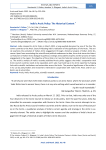
India’s Arctic Policy: The Historical Context
Статья научная
India released its Arctic Policy in March 2022, a long-awaited document by one of the four Observer countries to the Arctic Council indicating India's realisation of the significance of the Arctic. This article examines the evolution of India's Arctic engagement through a historical analysis of India's Arctic discourse. Apart from enunciating the scientific and political endeavours to date, the article traces the historical evolution of India's Arctic dialogue by political, strategic and academic experts and the process of India's engagement in the region. The objective of the article is to trace the historical context of India's Arctic policy. The article's analysis of India's recently published Arctic policy suggests that India's cooperation with Arctic council countries needs to be expanded, and it also must build up on its Arctic expertise by forging links with scientific institutions and universities across the Arctic. The practical significance of the article is in its use by policymakers and researchers interested in cooperation with India in the Arctic and for academic use at universities.
Бесплатно
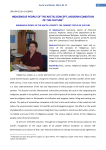
Indigenous people of the Arctic: concept, the current status of culture
Статья научная
Disclosed the etymological roots and essence of the concepts of ‛indigenous man’, ‛indigenous people’, displays the evolution of the content of the definitions of ‛indigenous people’ in the Russian and international legal practice, the ratio found in the evolutionary tradition and culture of the indigenous people of the Arctic.
Бесплатно
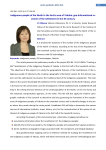
Статья научная
It is showed the dynamics of the number of the indigenous people of the North of Yakutia, according to the lists of the Population of the twentieth century and it was constructed the maps of the settlements with GIS technologies.
Бесплатно
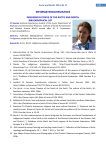
Indigenous people of the arctic and north: bibliographical list
Статья научная
Published bibliographical references and sources on ‛Indigenous people of the Arctic and the North’.
Бесплатно
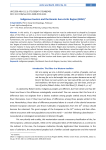
Indigenous tourism and the Barents Euro-Arctic Region (BEAR)
Статья научная
In this article, it is argued that indigenous tourism must be understood as shaped by European ideas of the Other, as well as a more recent development in global politics. Such broad and increasingly global structures frame those heterogeneous populations that are labeled and label themselves indigenous. Furthermore, the current situation of these peoples is also shaped by their relationships to surrounding majorities and nation states. Therefore, definitions of indigenous tourism should rather be built on minorities’ degree of control of tourism activities than by ideas of emblematic cultural features. The growth in the tourism industry in many parts of the Barents Euro-Arctic Region also represents an opportunity for representing and maintaining cultural features among minorities. Nevertheless, minorities might also face challenges by being relegated to a position in the tourism industry where other more powerful actors define a rather narrow field of what indigenous tourism is. This article is based on literary studies of contemporary research on indigeneity, tourism, and Sámi tourism and draws upon the author’s extensive previous research on Sámi tourism in Norway.
Бесплатно
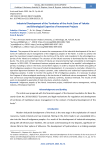
Статья научная
The purpose of the work is to assess the consequences of the industrial development of the territories of traditional nature management of the indigenous peoples of the North. In order to achieve the goal, the investment projects planned on the territory of the Arctic and considered in the ethnological expertise of the Yakutia are analyzed. The structure of the Yakutia economy is dominated by the mining industry. The Arctic and northern territories of Yakutia are characterized by high vulnerability to technogenic impacts. In 2012–2021, 39 investment business projects were considered in the republic’s ethnological expertise, including 12 ones in the Arctic and northern regions. In order to improve the health and quality of life of indigenous peoples in the areas of industrial development, it is necessary to conclude a trilateral Cooperation Agreement between the project customer, state authorities and authorized representatives of indigenous peoples. In order to monitor the quality of life of indigenous peoples, it is necessary to adopt the Program of ethno-ecological monitoring in the territories of traditional nature management. The study was carried out using historical-geographical, analytical, synthetic, statistical methods. The results of the work can be applied by specialists of state structures, scientists, students.
Бесплатно
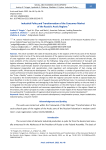
Industrial Policy and Transformation of the Consumer Market of the Russia’s Arctic Regions
Статья научная
The article considers the state of industrial policy in the subjects of the Arctic zone of the Russian Federation both in terms of the status and dynamics of the regional consumer market and the mechanisms of state regulation and support. In the current situation of economic sanctions and external threats, the main problems of the consumer market are the following: rising prices, transformation of transport and logistics schemes, declining quality of goods and services, reduction of their assortment. Opportunities for solving them could include: location of production sites closer to the end consumer, inter-production and interregional cooperation and specialization, state regulation and compensation of fuel, energy and transport tariffs, infrastructure development. The article considers a number of generalized cases of consumer preferences formation depending on the goods belonging of local producers to this or that sector of the “Price x Quality” matrix. A number of systemic problems associated with the need for local producers to respond to the transformational changes to which the regional consumer market is exposed today has been identified. In order to create a set of support measures and effective tools, it is necessary to develop a system of long–term guidelines and strategizing in the field of regional industrial policy: on the one hand, it is integrated into the state vertical of industrial management, on the other hand, it takes into account territorial features, industrial potential and consumer expectations of the population in the regions. Based on the analysis, the authors propose to create a single document in each region of the Russian Federation with the working title “Fundamentals of regional industrial policy and consumer market development”.
Бесплатно
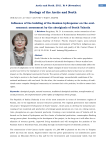
Статья научная
South Yakutia is the territory of residence of the native population (Evenki) and intensive industrial development. Sector studies have shown the presence of permanent factors that substantially affect the process of adaptation to the realities of life. Rapid changes of socio-economic structure of modern society have led to the emergence of new social and socio-political factors that have an intense impact on the Aboriginal community Evenki. The system of belief, constant communion with nature help to survive in the harsh environment of Evensk taiga, uncomfortable conditions of the national settlement with one hand. On the other, the invasion of industry on the territory of traditional nature compels Aboriginal community to increase their civic position, be able to assert their rights.
Бесплатно
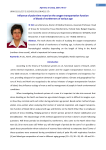
Статья научная
The work shows the results of studying the oxygen transportation function of blood of northerners of working age. It shows the dynamics of hematological variables depending on the length of living in the North (northern time record), which is important for human ecology.
Бесплатно
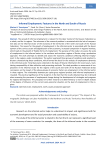
Informal Employment: Features in the North and South of Russia
Статья научная
The spread of informal employment is relevant for the labor market of the Russian Federation as a whole, and for its regions. The relevance of the research problem is associated with the lack of comparative data on the informal sector of the economy of the territories of the north and south of the Russian Federation. The reason for the growth of employment in the informal sector is associated with the development of the service sector and digitalization of the economy, increased competition in regional markets, which leads to the growth of flexible forms of employment. The purpose of the study is to assess the scale of employment in the informal sector in the northern and southern regions of Russia using a production approach. The work attempts to identify and assess the economic conditions affecting informal employment in the regions under consideration. The author examined three groups of conditions and selected indicators characterizing these conditions, which formed the basis for the analysis of employment dynamics in the informal sector. Panel data were collected on the basis of Rosstat information for recent years, maintaining comparability of data collection and processing methods. The study provides an assessment of employment in the informal sector for the regions of the south and north of the Russian Federation draws conclusions on the impact of the above groups of economic factors on employment in the informal sector in these regions. The relationship between per capita gross regional product and informal employment is revealed. The practical significance of the study lies in the fact that the results obtained may be in demand when assessing the processes of employment change during the development of strategies and programs for regional development. The prospects for further research are determined by a more in-depth analysis of the degree of influence of the current socio-economic situation on the level of employment in the regions.
Бесплатно
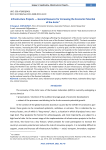
Infrastructure projects — general resource for increasing the economic potential of the Arctic
Статья научная
The study examines modern challenges affecting the development of the Arctic marine transport system and the economic situation of the Arctic zone of the Russian Federation (AZRF). The basic normative legal acts that determine the activities of economic organizations in the Arctic are presented. It was determined that in the context of the world economy regression caused by geopolitical, economic, natural and other reasons, increasing the AZRF economic potential is a priority goal, and the implementation of tasks for the Arctic zone development and ensuring national security corresponds to the implementation of the Fundamentals of State Policy of Russia. The tendency of competitive struggle by the Arctic countries on the issues of economics and geopolitics is noted. The Northern Sea Route (NSR) is presented as the basis of the Arctic sea transport system, its economic potential, international importance, international integration with the People's Republic of China is shown. The main infrastructural projects of the Arctic for the development of the oil and gas complex, the construction of an icebreaker fleet, the construction of new and modernization of the existing ports of the NSR, etc. are presented to solve the problems of increasing cargo traffic along the Northern Sea Corridor. New projects for modernization of port infrastructure, transport development, etc. are considered. The purpose of the study is to assess the ongoing and planned infrastructure projects carried out by the state and business to increase the economic potential of the Arctic. Many of them are unique, which expresses firm confidence in the modern development of the Arctic zone, in ensuring the national security of the Russian Federation.
Бесплатно

Innovation Potential of the Arctic Regions of Russia
Статья научная
The paper provides a comparative analysis of foreign and Russian methodologies for assessing innovation potential. It is shown that foreign methodologies cannot be used to determine the innovation potential of the Arctic regions of Russia due to specific indicators that are not calculated by Russian statistics. It is determined that the use of Russian methodologies for an objective assessment of the Arctic regions in terms of innovation potential is difficult. In this regard, the authors developed a comprehensive methodology for assessing innovation potential, the principal novelty of which consists, firstly, in the use of specific indicators (in other methods, the authors use not specific, but absolute statistical indicators); secondly, only indicators that characterize innovation development are used; thirdly, expert research methods are excluded. According to the results of the analysis of statistical data, it is determined that the Arctic regions have low rates of innovation development and lag behind the average Russian values. Based on the proposed methodology, the innovation potential was calculated and the Russian regions were ranked for ten years, including 2011, 2013, 2017 and 2020, in order to compare the dynamics of the Arctic regions. It is shown that the Arctic regions are characterized by rather low values of innovation potential and are mostly below 50th place in the ranking of Russian regions.
Бесплатно

